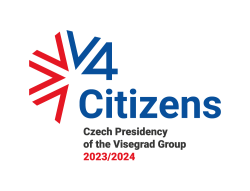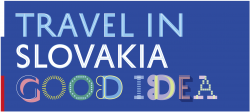
| Thu | Fri | Sat | Sun | Mon |
|---|---|---|---|---|
| 23 | 26 | 30 | 26 | 22 |
| Thu | Fri | Sat | Sun | Mon |
|---|---|---|---|---|
| 27 | 28 | 34 | 28 | 27 |
| Thu | Fri | Sat | Sun | Mon |
|---|---|---|---|---|
| 27 | 29 | 33 | 34 | 28 |
| Thu | Fri | Sat | Sun | Mon |
|---|---|---|---|---|
| 28 | 30 | 33 | 36 | 30 |
Two Decades of Visegrad Cooperation
Selected V4 Bibliography
Introduction—A Useful Look Around (Petr Vágner)
Visegrad—Arrival, Survival, Revival (Tomáš Strážay)
Selected V4 Bibliography (Visegrad in General, Political Cooperation, Sectoral Cooperation): download [.PDF, 7.96 MB]
Introduction—A Useful Look Around
Movement is life. This is a thesis that one finds in many forms and different contexts. There are lofty philosophical treatises devoted to this topic, as there are lowly advertisements drawing us to fitness centers. Movement and the changes resulting from it are intrinsic to human nature. Human history seems to be forward motion. Whether forward movement automatically means moving in the right direction is an important question, but the answer is not the topic of the following text.
However, sometimes it can be useful to take pause, not just to rest but also to reflect on where we have been and where we are heading. Without any doubt, answering the aforementioned question is another part of human nature. After such a pause our next move can be more certain and more meaningful if the relevant lessons have been learned.
In the context of scientific research, it is bibliography in particular that allows us to take such pause. Bibliography is very demanding and not too popular among scientists, although none would hesitate over the importance or usefulness of this work for the further development of science. Only a true genius can proceed in the right direction without being familiar with what has already been achieved before. Even Isaac Newton wrote: If I have seen further it is only by standing on the shoulders of giants.
The work of bibliographers provides the sciences and the arts with such shoulders—shoulders that save time and energy and that prepare new impetus for research. Not everybody can be like Newton but solid soil under the feet is no small contribution.
You have here before you one such bibliography, the bibliography of Visegrad cooperation. Its authors provide us not only with the possibility of using it for further research on the topic, but they also give us the opportunity to realize how deep or shallow the common awareness of the cooperation is. Visegrad cooperation can be better understood this way.
The hundreds of entries show that the Visegrad Group is not unknown and the topic resonates not just in Visegrad expert circles, but also beyond the region. The books, studies and articles, arranged in chronological order, show us the various ups and downs of the cooperation. Experiencing the evident development of Visegrad cooperation in the first decade of the 21st century, it is a bit strange to read articles from the second half of the 1990s that almost bury the group. But such was the reality then.
The bibliography does not contain only materials which discuss various common activities of the Visegrad countries, but there are also studies comparing miscellaneous social, economic and cultural phenomena in all Visegrad countries. The fact that their authors considered such an attitude essential to producing useful results gives us evidence of the fact that the Visegrad format has become necessary and “natural.” Even better is the obvious rise in the number of concrete projects realized in the Visegrad format with the help of the International Visegrad Fund. The full list of these projects would fill the pages of a separate bibliography.
Some articles written outside Visegrad space—particularly in transition countries—demonstrate another interesting fact. The Visegrad countries’ experience is regarded by other, former communist countries as a possible example for managing various problems connected with the complicated transformation process. Such an attitude confirms that the Visegrad countries’ effort, anchored in the V4 program documents, has its importance and brings results in sharing their experience with their neighbors, near and far.
Almost every bibliography faces criticism pointing out what has been omitted. Authors usually try to avoid this potential reproach by using the word “selected” in the subtitle of theirwork. This bibliography bears the word selected in its title, too, but it should be considered more a practical than defensive motif.
The authors do not conceal that they have not collected allmaterials devoted to the Visegrad Group. This would hardlybe possible and, at the same time, it would not be very helpful.This bibliography came into being in an effort to bring together everything important that has been written about Visegrad cooperation in the Visegrad countries. To reach this aim, experts on Visegrad cooperation were asked totake part in the project. Using a selective method, theychose the most substantial sources and conducted basicheuristic research for other researchers.
The original intention was to collect key published materialsfrom the Visegrad countries. During discussions about thefinal form of the bibliography, the idea emerged to broadenthe research to shed light on the Visegrad Group in neighboringcountries, as well as in some countries further afield (e.g. France or the U.S.). With the help of invited guests andthrough Internet research the intended aim was met.However, it is necessary to stress that this research was notvery detailed and the outline of the topic was taken as sufficient because the key and most substantial researchwas focused on works originated in Visegrad countries.
The word selected has another meaning in the case of thisbibliography: it as an invitation to cooperate, as the bibliography does not only exist in print, but is also on-line. This allows for ongoing supplementation of the bibliography, as well as for better research possibilities. In the future, it would also be usefulif the Fund tried to gather the full-text versions of most books and articles listed in this bibliography and made it available in its library.
The Visegrad Bibliography presents monographs, collective works, articles and other sources necessary to the further development of research in Visegrad Group affairs. TheHamlet-like dilemma—to include or not to include—was addressed in two ways. The authors evaluated substantialmaterials with “Visegrad” in their texts. It was necessary todistinguish whether Visegrad was used only to refer to allVisegrad countries, or whether its use was relevant to the theme of Visegrad cooperation. The latter was based on the authors’ expert knowledge of the considered materials, and therein lies the project’s added value.
As for the structure of the book, it contains a brief introduction to the history of the Visegrad Group by Tomáš Strážay and the bibliography as such. The bibliography consists of approximately more than 1,400 entries. The entries that have not been translated into English contain English translations made by the editorial team. The official translations—where available—were not changed and contain the originaltitles. As a result, certain inconsistencies may appear to the reader, e.g. in the spelling of Visegrad (in places appearingaccented as Visegrád). Internet sources were retrieved andchecked in the pre-print preparations in mid-November 2011. The bibliography references are cited according to the norm ISO 690.
In the final result the bibliography is a nearly comprehensive overview of all important published works in the Czech Republic, Hungary, Poland and Slovakia about the Visegrad Group and indicates the state of Visegrad studies in other countries.The international team of authors—representative of the Visegrad region—took pause, looked around, recorded itsresults and suggests that we proceed with this body of work. I would like to believe that this challenge will be usedand that Visegrad studies will be successfully developed. Itgoes without saying that it will depend not only on works likethis one.The most important is how the Visegrad Group will performin the future. This bibliography gives those who are interested the opportunity to prepare other analyses of what the Visegrad Group has achieved. Recommendations for thefuture can be given but material for further reading can beprepared only thanks to the remarkable reality madepossible by the Visegrad Group. This is a great opportunityand it would be a pity not to use it.
Petr Vágner
Executive Director of the International Visegrad Fund
VÁGNER, Petr. Introduction—A Useful Look Around. In Two Decades of Visegrad Cooperation—Selected V4 Bibliography. Bratislava : International Visegrad Fund, 2011. pp. 7–13. ISBN 9788097082802.
See also: Visegrad—Arrival, Survival, Revival by Tomáš Strážay
Download: Two Decades of Visegrad Cooperation... [.PDF, 7.96 MB]







